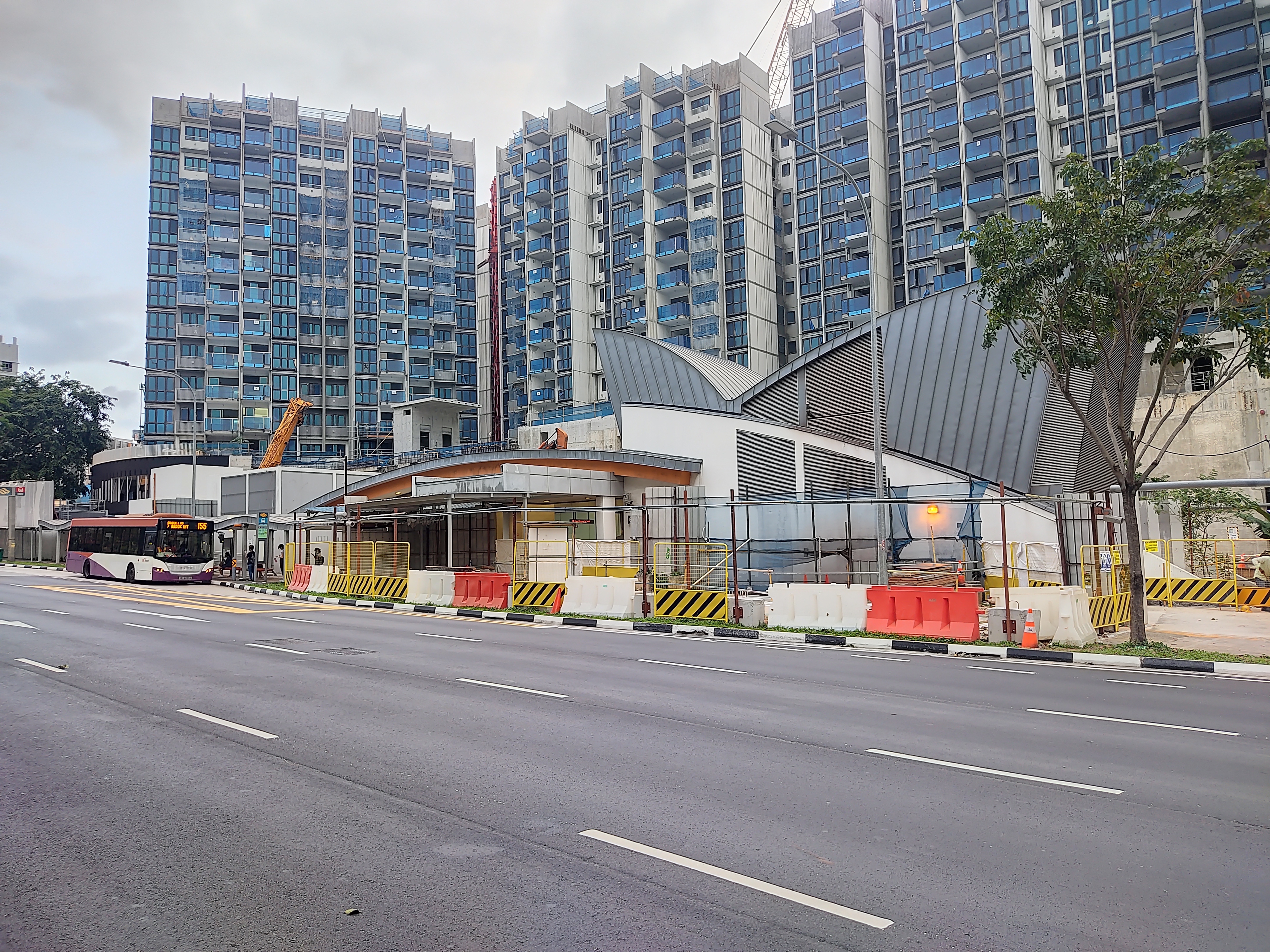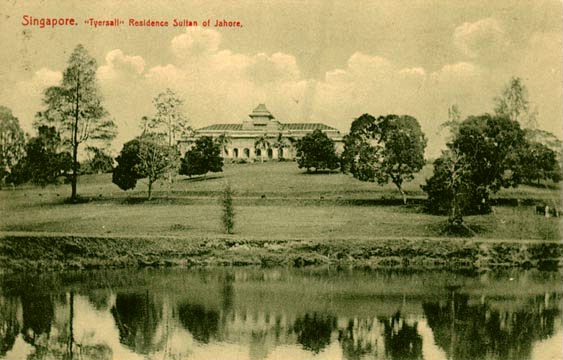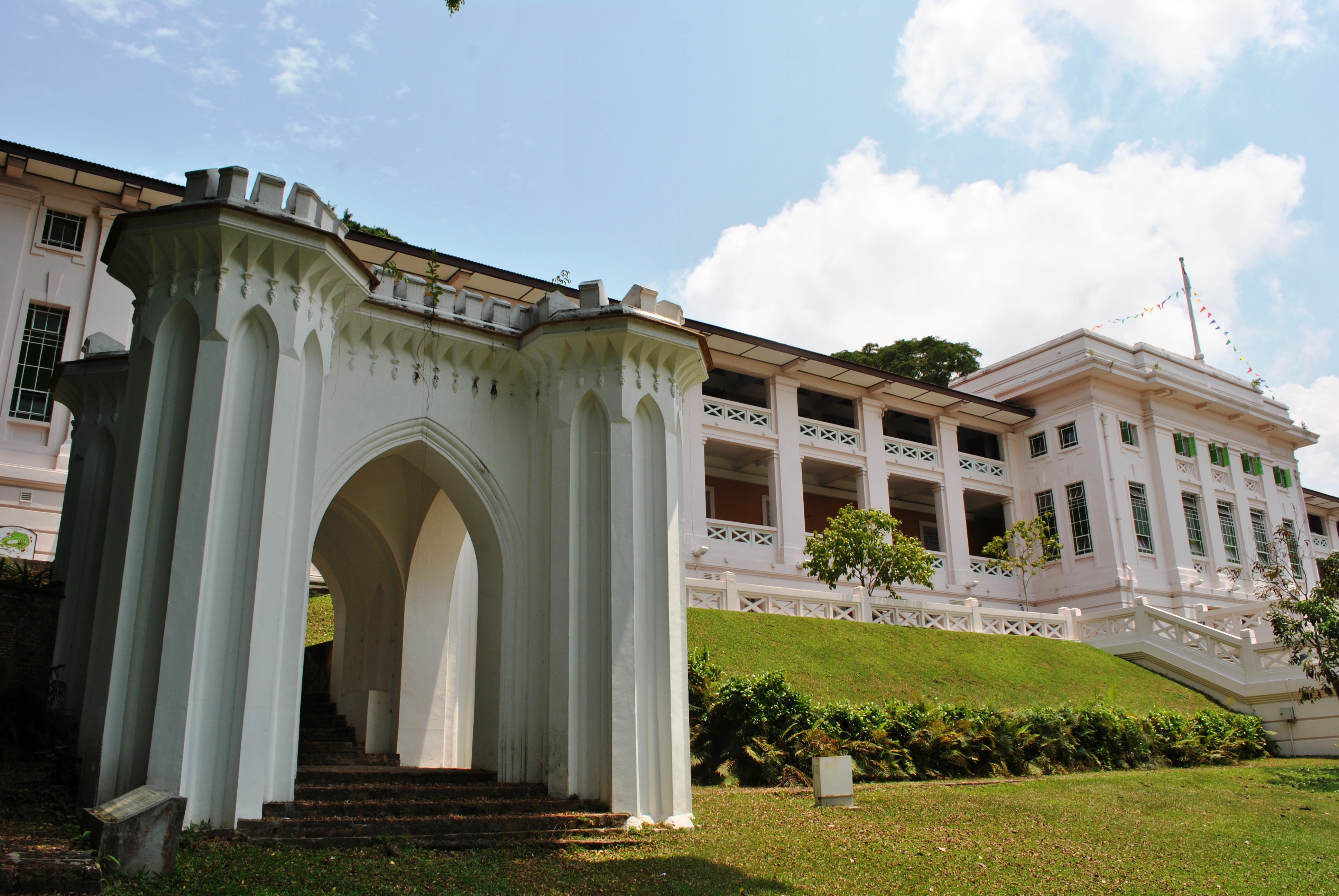|
Bidadari, Singapore
Bidadari is a housing estate in the Central Region of Singapore, part of the planning area of Toa Payoh. Before the development, the area was the site of Bidadari Cemetery, which served Christian, Muslim, Hindu and Sinhalese communities. Etymology The word ''bidadari'' means "angel" in Malay, which was in turn derived from the Sanskrit word ''vidhya dhari'', which means a nymph of India's heaven or a houri of paradise. The ''bidadari'' are depicted as angels that preside over the union of flowers. History 19th century: Estates and palace During the early 19th century, a 45-acre of estate land in Singapore was first acquired by the British civil engineer Henry Minchin Simons in 1855, and there he had the house built between 1855 and 1861 and would later exchange the estate with William Napier for his Tyersall estate. The estate was subsequently sold to Temenggong Abu Bakar in the mid-1860s. He gave it to his second wife, a Danish woman Zubaidah binti Abdullah who was ... [...More Info...] [...Related Items...] OR: [Wikipedia] [Google] [Baidu] |
Toa Payoh
Toa Payoh (, ta, தோ பாயோ) is a planning area and matured residential town located in the northern part of the Central Region of Singapore. Toa Payoh planning area borders Bishan and Serangoon to the north, the Central Water Catchment to the northwest, Kallang to the south, Geylang to the southeast, Novena to the west and Hougang to the east. Toa Payoh New Town is situated in the western portion of the Toa Payoh planning area. The latter occupies a much larger area, encompassing estates such as Potong Pasir and Bidadari. Etymology Toa Payoh, in Hokkien, translates as "big swamp" (with ''toa'' meaning "big" and ''payoh'' meaning "swamp"). The Malay word for swamp is ''paya''. It is the Chinese equivalent of Paya Lebar, which translates to "big swamp land". Toa Payoh's old Chinese name, was known as ''Ang Chiang San'' (alternatively ''An Xiang Shan'') or "burial hill". The area was called as such because of the presence of an old cemetery located in the area. John ... [...More Info...] [...Related Items...] OR: [Wikipedia] [Google] [Baidu] |
Sanskrit
Sanskrit (; attributively , ; nominally , , ) is a classical language belonging to the Indo-Aryan branch of the Indo-European languages. It arose in South Asia after its predecessor languages had diffused there from the northwest in the late Bronze Age. Sanskrit is the sacred language of Hinduism, the language of classical Hindu philosophy, and of historical texts of Buddhism and Jainism. It was a link language in ancient and medieval South Asia, and upon transmission of Hindu and Buddhist culture to Southeast Asia, East Asia and Central Asia in the early medieval era, it became a language of religion and high culture, and of the political elites in some of these regions. As a result, Sanskrit had a lasting impact on the languages of South Asia, Southeast Asia and East Asia, especially in their formal and learned vocabularies. Sanskrit generally connotes several Old Indo-Aryan language varieties. The most archaic of these is the Vedic Sanskrit found in the Rig Veda, a colle ... [...More Info...] [...Related Items...] OR: [Wikipedia] [Google] [Baidu] |
Woodleigh MRT Station
Woodleigh MRT station is an underground Mass Rapid Transit (MRT) station on the North East line (NEL), in Bidadari, Singapore. The station is underneath Upper Serangoon Road, near the junction with Upper Aljunied Road. Areas served include the Bidadari Estate and Stamford American International School. Woodleigh was first announced along with the 16 NEL stations in March 1996. Though it was completed along with the rest of the NEL in June 2003, the station remained closed due to the lack of local developments. It eventually opened in June 2011. As with most of the NEL stations, it is a designated Civil Defence shelter. Woodleigh station features an Art-in-Transit public artwork ''Slow Motion'' by April Ng, depicting commuters going about their daily lives, on 30 zinc panels. History The North East line (NEL) project, which was first proposed in 1984, received government approval in January 1996. Woodleigh station was among the sixteen NEL stations announced by communications ... [...More Info...] [...Related Items...] OR: [Wikipedia] [Google] [Baidu] |
Sultan Of Johor
The Sultan of Johor is a hereditary seat and the sovereign ruler of the Malaysian state of Johor. In the past, the sultan held absolute power over the state and was advised by a ''bendahara''. Currently, the role of ''bendahara'' has been taken over by first minister (Malay: ''Menteri Besar'') with the constitutional monarchy system via Johor State Constitution. The Sultan is the constitutional head of state of Johor. The Sultan has his own independent military force, the Royal Johor Military Force (Malay: ''Askar Timbalan Setia Negeri Johor''). The Sultan is also the Head of Islam in Johor state. History The first sultan of Johor was Alauddin Riayat Shah II. He was the son of the last sultan of Malacca, Sultan Mahmud Shah. The descendants of the Sultanate of Malacca in Johor ended with the death of Sultan Mahmud Shah II in 1699 and throne was taken over by Sultan Abdul Jalil IV, marking the rule of the House of Bendahara. Abdul Jalil IV was a ''bendahara'' before the de ... [...More Info...] [...Related Items...] OR: [Wikipedia] [Google] [Baidu] |
Istana Bidadari
Istana Bidadari was a palace once located within the Bidadari Cemetery in Singapore from the late-1850s to 1915. History An estate of about 45-acre in Singapore was first acquired by the British civil engineer Henry Minchin Simons in 1855, there he had the house built between 1855 and 1861. He later exchanged the estate with William Napier for his Tyersall estate. The estate was subsequently sold to Temenggong Abu Bakar in the mid-1860s and he gave it to his second wife, the Danish woman Enche' Puan Besar Zubaidah binti Abdullah who was born Cecilia Catharina Lange, for her residence. Thus the estate was known as Bidadari and house was known as Istana Bidadari, in reference to the beauty of the Temenggong's wife as compared to the fairies. Temenggong Abu Bakar would spend much for his time there with his wife, although his main residence was at Tyersall. Istana Bidadari was noted to be the birthplaces of Maharaja of Johor Abu Bakar and Zubaidah's daughter Tengku Mariam Al-Ma ... [...More Info...] [...Related Items...] OR: [Wikipedia] [Google] [Baidu] |
Temenggong Abu Bakar
Sultan Sir Abu Bakar Al-Khalil Ibrahim Shah ibni Almarhum Temenggong Seri Maharaja Tun Daeng Ibrahim ( Jawi: ; 3 February 1833 – 4 June 1895) was the Temenggong of Johor. He was the 1st Sultan of Modern Johor, the 21st Sultan of Johor and the first Maharaja of Johor from the House of Temenggong. He was also informally known as "The Father of Modern Johor", as many historians accredited Johor's development in the 19th century to Abu Bakar's leadership. He initiated policies and provided aids to ethnic Chinese entrepreneurs to stimulate the development of the state's agricultural economy which was founded by Chinese migrants from Southern China in the 1840s. He also took charge of the development of Johor's infrastructure, administrative system, military and civil service, all of which were modelled closely along Western lines. Abu Bakar was noted for his diplomatic skills, and both the British and Malay rulers had approached him for advice in making important decisions. He was ... [...More Info...] [...Related Items...] OR: [Wikipedia] [Google] [Baidu] |
Tyersall, Singapore
Tyersall Park is an estate in Singapore, bound by Holland Road and Tyersall Avenue, and near the Singapore Botanic Gardens. Previously a private land belonging to the Sultan of Johor from 1862, some portions of it had been acquired by the Government of Singapore in 1990 and in 2009 respectively. The property is generally restricted from the public (excluding the parts that have been acquired) and is fenced along Tyersall Avenue. The ring road known as Catterick Circle used to run through the estate, and was still shown on maps even after the late Sultan of Johor's former palaces were no longer charted on any modern maps of Singapore. Catterick Circle was officially removed from updated maps of Singapore in the 1990s. History Early colonial years About three to four decades after Singapore was established as a Straits Settlement trading port in 1819, the adjoined estates consisted of Woodneuk and Tyersall at Tanglin and were first owned by the English trader Captain John Di ... [...More Info...] [...Related Items...] OR: [Wikipedia] [Google] [Baidu] |
William Napier (lawyer)
William "Royal Billy" Napier (1804–1879), was a Scottish lawyer and newspaper editor who primarily developed his career in Singapore, and was also the first Lieutenant-Governor of Labuan from 1848 to 1850. History At least two of Macvey Napier's sons lived in Singapore in its early days. David Skene Napier, a merchant, was one of the first magistrates appointed by Sir Stamford Raffles in 1823. Prior to follow in to Singapore after his brother, William Napier had a daughter, Catherine Napier in 1829, by a Eurasian woman from Malacca. In 1831, Napier arrived in Singapore and was appointed as Singapore's first law agent in 1833. He was also one of the four founders of the Singapore Free Press on 1 October 1835, and edited that weekly newspaper until 1846, when he returned to the United Kingdom for health reasons. In 1844, he married Maria Frances Vernon, the widow of architect George Coleman and adopted her son, George Vernon Coleman, who would die at sea on board of HMS Maea ... [...More Info...] [...Related Items...] OR: [Wikipedia] [Google] [Baidu] |
Houri
In Islamic religious belief, houris (Pronounced ; from ar, حُـورِيَّـة ,حُورِيّ, ḥūriyy, ḥūrīya), "literally means having eyes with marked contrast of black and white", group=Note are women with beautiful eyes described as a reward for the faithful Muslim believers in Paradise. The term is used four times in the Quran, where they are mentioned indirectly several other times, (sometimes as ''azwāj'', lit. companions), and Hadith provide a "great deal of later elaboration". They have been said to have "captured the imagination of Muslims and non-Muslims alike". Smith & Haddad, ''Islamic Understanding'', 1981: p.164 Muslim scholars differ as to whether they refer to the believing women of this world or a separate creation, with the majority opting for the latter. Etymology In classical Arabic usage, the word ''ḥūr'' ( ar, حُور) is the plural of both ''ʾaḥwar'' ( ar, أحْوَر) (masculine) and ''ḥawrāʾ'' ( ar, حَوْراء) (feminine) ... [...More Info...] [...Related Items...] OR: [Wikipedia] [Google] [Baidu] |
India
India, officially the Republic of India (Hindi: ), is a country in South Asia. It is the seventh-largest country by area, the second-most populous country, and the most populous democracy in the world. Bounded by the Indian Ocean on the south, the Arabian Sea on the southwest, and the Bay of Bengal on the southeast, it shares land borders with Pakistan to the west; China, Nepal, and Bhutan to the north; and Bangladesh and Myanmar to the east. In the Indian Ocean, India is in the vicinity of Sri Lanka and the Maldives; its Andaman and Nicobar Islands share a maritime border with Thailand, Myanmar, and Indonesia. Modern humans arrived on the Indian subcontinent from Africa no later than 55,000 years ago., "Y-Chromosome and Mt-DNA data support the colonization of South Asia by modern humans originating in Africa. ... Coalescence dates for most non-European populations average to between 73–55 ka.", "Modern human beings—''Homo sapiens''—originated in Africa. Then, int ... [...More Info...] [...Related Items...] OR: [Wikipedia] [Google] [Baidu] |
Nymph
A nymph ( grc, νύμφη, nýmphē, el, script=Latn, nímfi, label=Modern Greek; , ) in ancient Greek folklore is a minor female nature deity. Different from Greek goddesses, nymphs are generally regarded as personifications of nature, are typically tied to a specific place or landform, and are usually depicted as maidens. They were not necessarily immortal, but lived much longer than human beings. They are often divided into various broad subgroups, such as the Meliae (ash tree nymphs), the Dryads (oak tree nymphs), the Naiads (freshwater nymphs), the Nereids (sea nymphs), and the Oreads (mountain nymphs). Nymphs are often featured in classic works of art, literature, mythology, and fiction. Since the Middle Ages, nymphs have been sometimes popularly associated or even confused with fairies. Etymology The Greek word has the primary meaning of "young woman; bride, young wife" but is not usually associated with deities in particular. Yet the etymology of the noun remains ... [...More Info...] [...Related Items...] OR: [Wikipedia] [Google] [Baidu] |
Bidadari Cemetery
Bidadari Cemetery (Malay: ''Perkuburan Bidadari'', Chinese: 比达达利坟场) is a defunct cemetery in Singapore. It used to serve the Christian, Muslim, Hindu and Sinhalese communities, and accepted burials between 1907 and 1972. The site of Bidadari Cemetery used to be the Istana residence of one of Sultan Abu Bakar of Johor's wives.Bidadari Cemetery ''Singapore Infopedia''. By 2006, all known graves were exhumed to make way for development of the Bidadari Estate. History A 45-acre estate in Singapore was first acquired by the British civil engineer Henry Minchin Simons in 1855, there he had the residence built between 1855 to 1861 and later exchanged it with[...More Info...] [...Related Items...] OR: [Wikipedia] [Google] [Baidu] |






